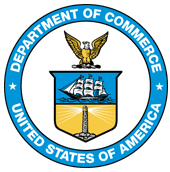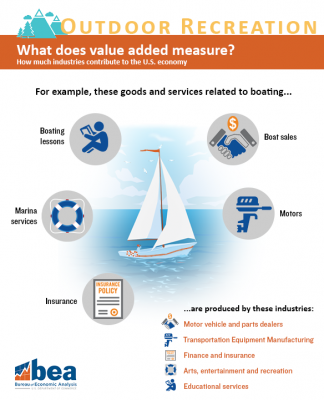Americans who hit the trails to ski, bike or hike aren’t just working up a sweat; they’re also generating economic activity. Outdoor recreation accounted for 2.0 percent of the U.S. economy, or $373.7 billion, in 2016, according to prototype statistics for the Bureau of Economic Analysis’ newest special account.
The outdoor recreation economy grew 3.8 percent in 2016, compared with the overall U.S. economy’s 2.8 percent growth that year, the data show. This is the first time BEA has put numbers to a group of activities that encompasses catching fish, riding horses, flying gliders and more.
"Businesses need the right data to help them hire, invest and grow. The historical lack of detailed federal data regarding outdoor recreational activities has handicapped both the private and public sectors. The public will no doubt be surprised at the economic importance of this industry as we release prototype statistics measuring the impact of activities like boating, fishing, RVing, hunting, camping, hiking and more. This release is a milestone for business executives, small-business owners, entrepreneurs, and government officials, who will rely on these detailed data to plan, grow, and gain new insights into this dynamic part of the U.S. economy," said U.S. Commerce Secretary Wilbur Ross.
The release of these statistics, covering 2012 to 2016, is a significant step in the development of the Outdoor Recreation Satellite Account. Feedback about the prototypes will be used to help finalize the methodology and presentation of the account, due for final release in the fall of this year. Outdoor recreation will join other BEA supplemental accounts that spotlight specific areas of the economy, such as travel and tourism and arts and cultural production.
Statistics shedding new light on the economic role of outdoor recreation will help businesses make decisions about hiring and investment and aid the work of policymakers and managers of public lands and waters.
The prototype statistics show the outdoor recreation economy through two different lenses: by type of activity, such as hunting or sailing, and by industries that produce goods and services for outdoor recreation, such as manufacturing or retail trade.
The data for activities is given as gross output—principally a measure of sales or receipts associated with each activity. Output for cycling, for example, includes sales of bicycles, bike gloves and accessories, bike repair services, and so on.
Outdoor activities centered on motorized vehicles, including RVs and motorcycles, stand out from the pack, accounting for $59.4 billion of gross output in 2016, more than half of it attributed to RVs.
Boating and fishing together represented $38.2 billion in gross output; hunting, shooting and trapping accounted for $15.4 billion.
When focused on industries, BEA estimated outdoor recreation’s role in each industry’s “value added” – a measure of its contribution to the U.S. economy or gross domestic product.
Retail trade, accommodation and food services, and manufacturing were the largest contributors by industry to the outdoor recreation economy in 2016. Retail trade alone accounted for 21.9 percent of all activity in the outdoor recreation economy, at $81.7 billion.
Industry statistics for value added, gross output, employment and compensation were each estimated using total outdoor recreation, which includes supporting activities such as construction, travel and government spending. (Examples include construction of a marina, a vacation trip to a national park, and a state building a hiking trail.)
When looking at the data by activity, however, you can see the breakdown for supporting activities versus core activities. In addition, the core activities are divided into two types, reflecting two popular definitions of outdoor recreation. “Conventional outdoor recreation” activities require some level of physical exertion and occur in natural environments. “Other outdoor recreation” activities qualify only under a broader definition that encompasses all outdoor activities undertaken for pleasure, such as attending outdoor festivals or visiting water parks.
In 2016, conventional activities accounted for 36.7 percent of outdoor recreation gross output and other activities were 22.1 percent. Supporting activities, such as trips and travel, accounted for the remaining 41.2 percent.
You can find the news release and data tables on bea.gov’s Outdoor Recreation Satellite Account page, along with background material and frequently asked questions.
To submit comments about the prototype statistics or ask a question, email [email protected]. Feedback will help BEA as it finalizes the definitions, data sources and methodology that underpin the new account and the format in which final results will be displayed in the fall. To ensure consideration, comments should be submitted no later than April 27, 2018.


